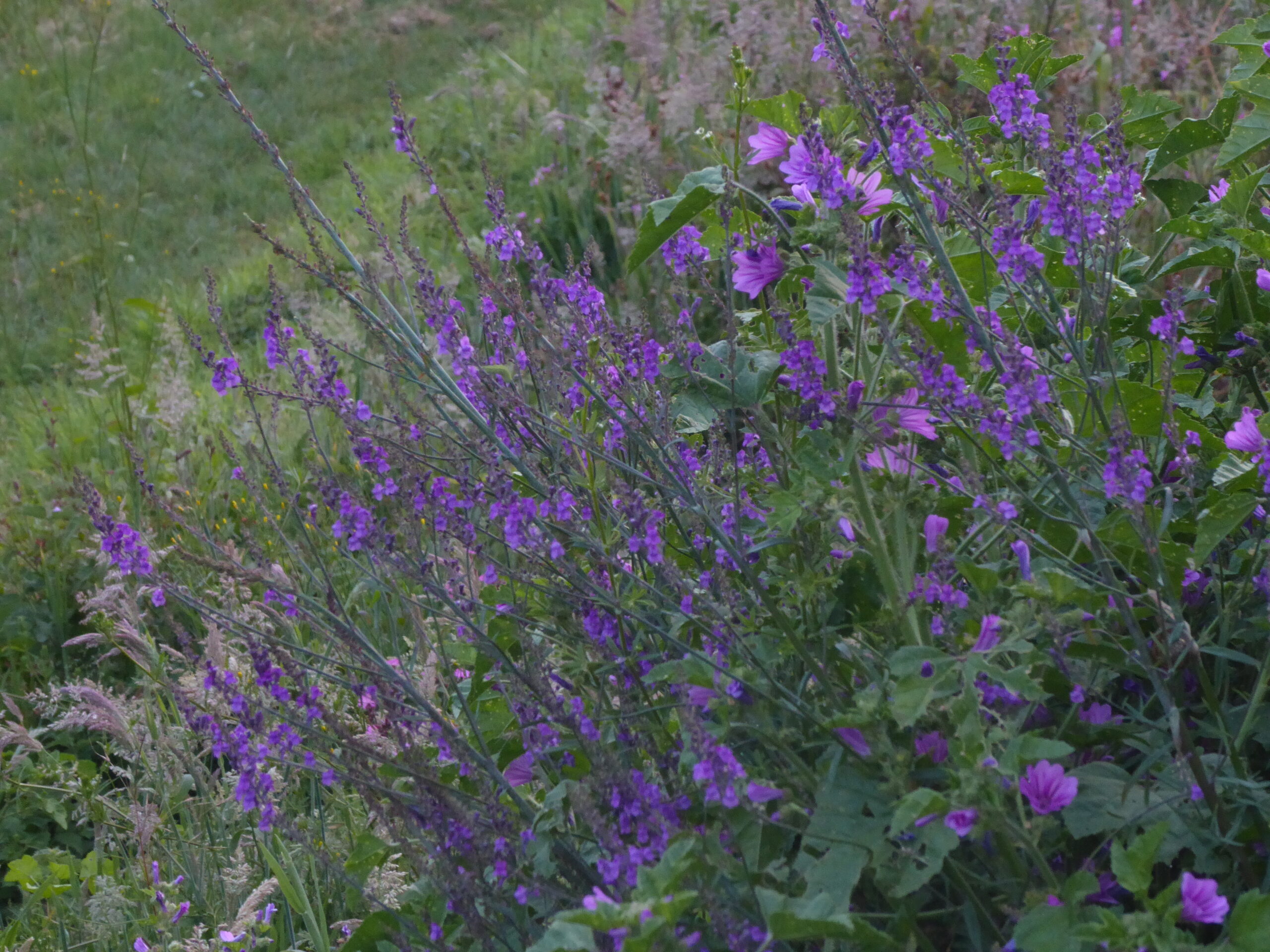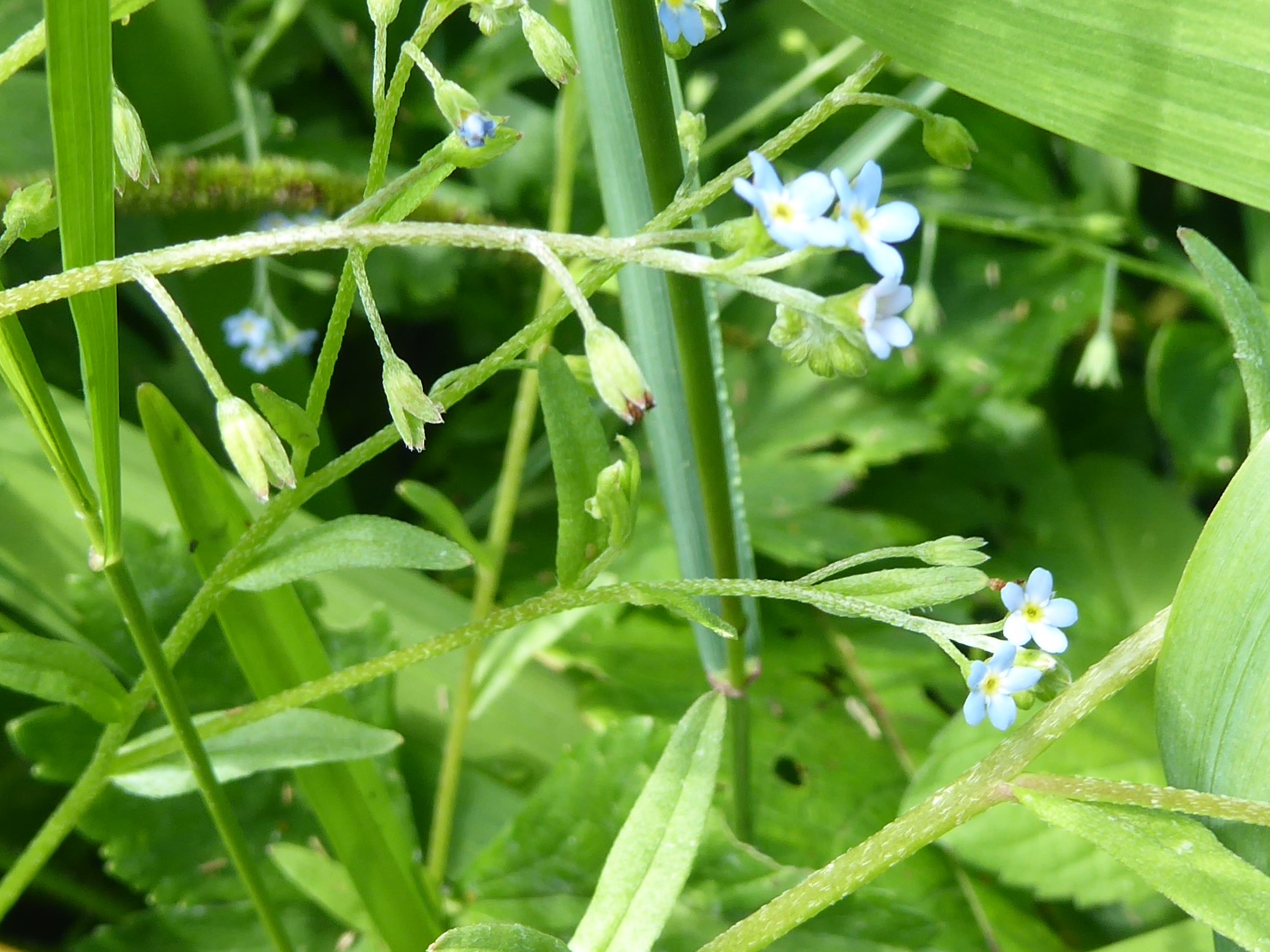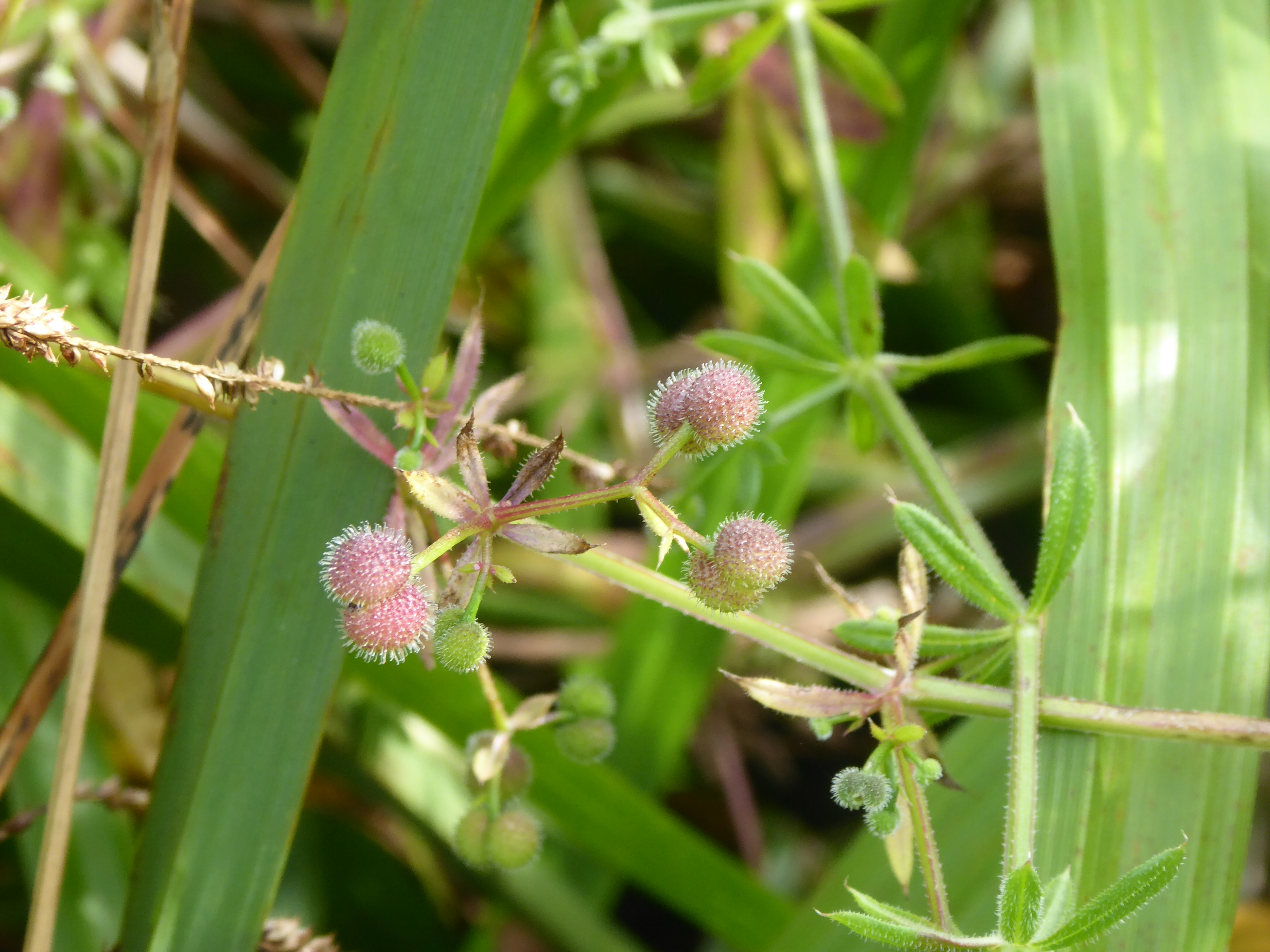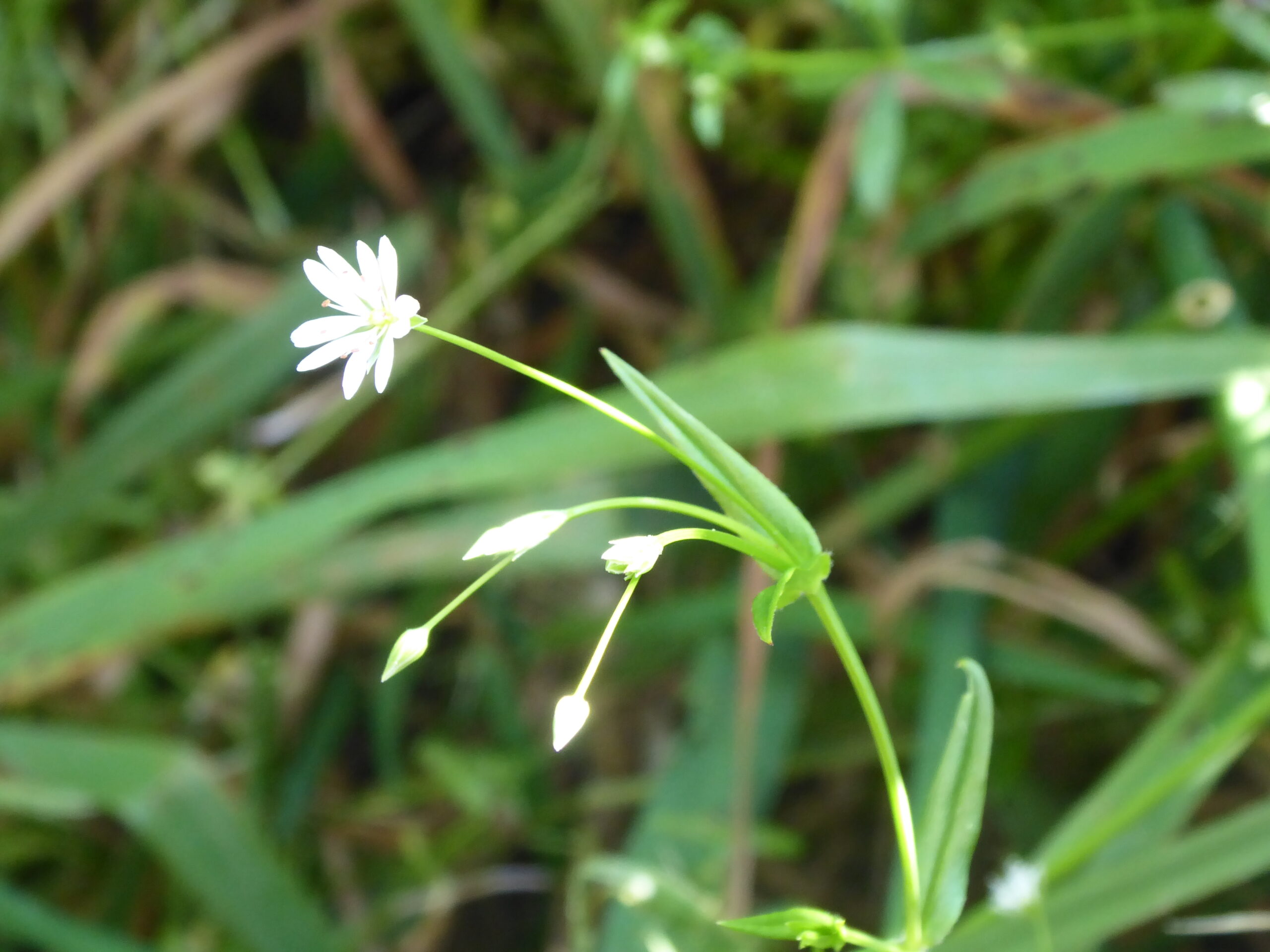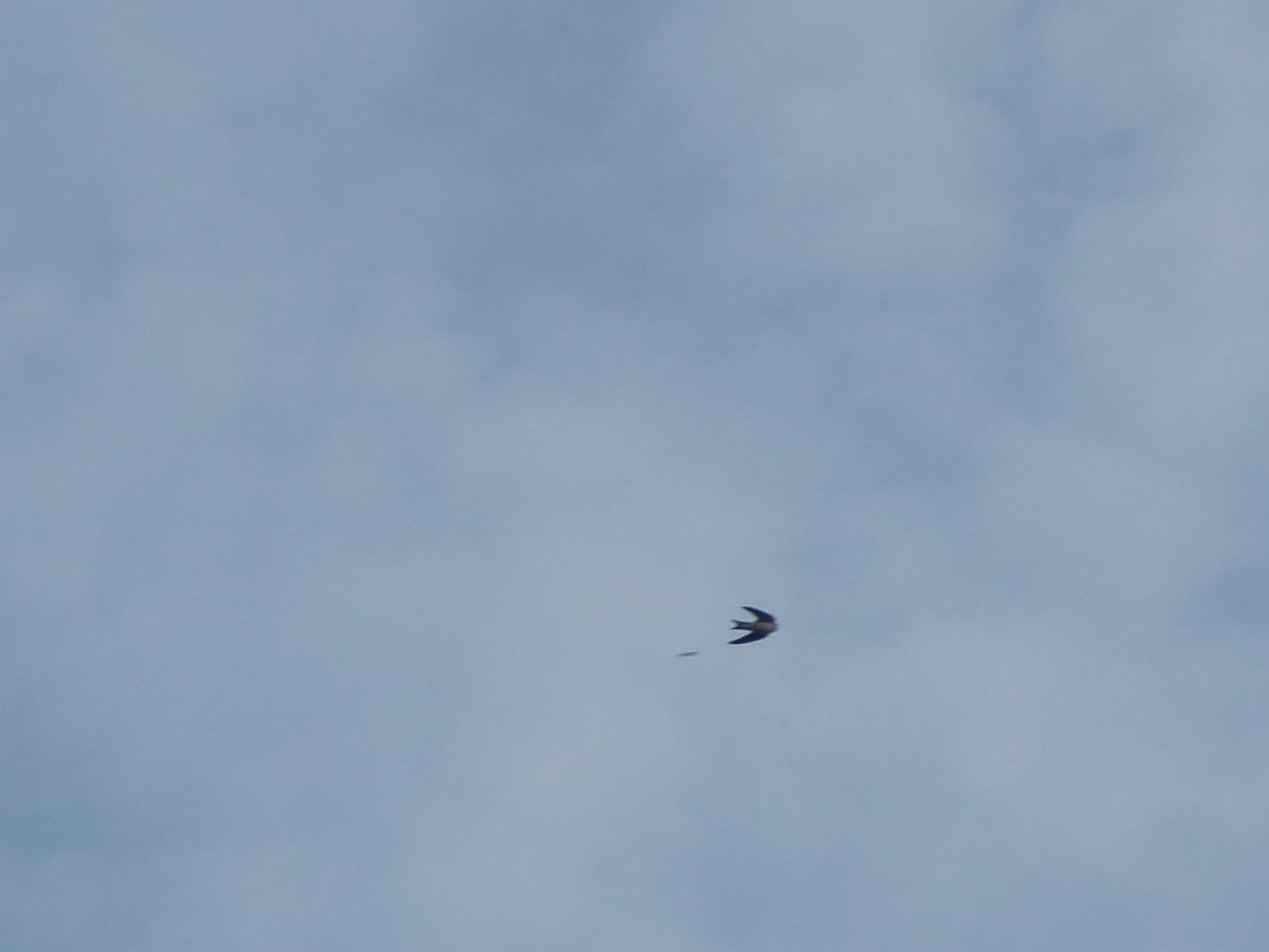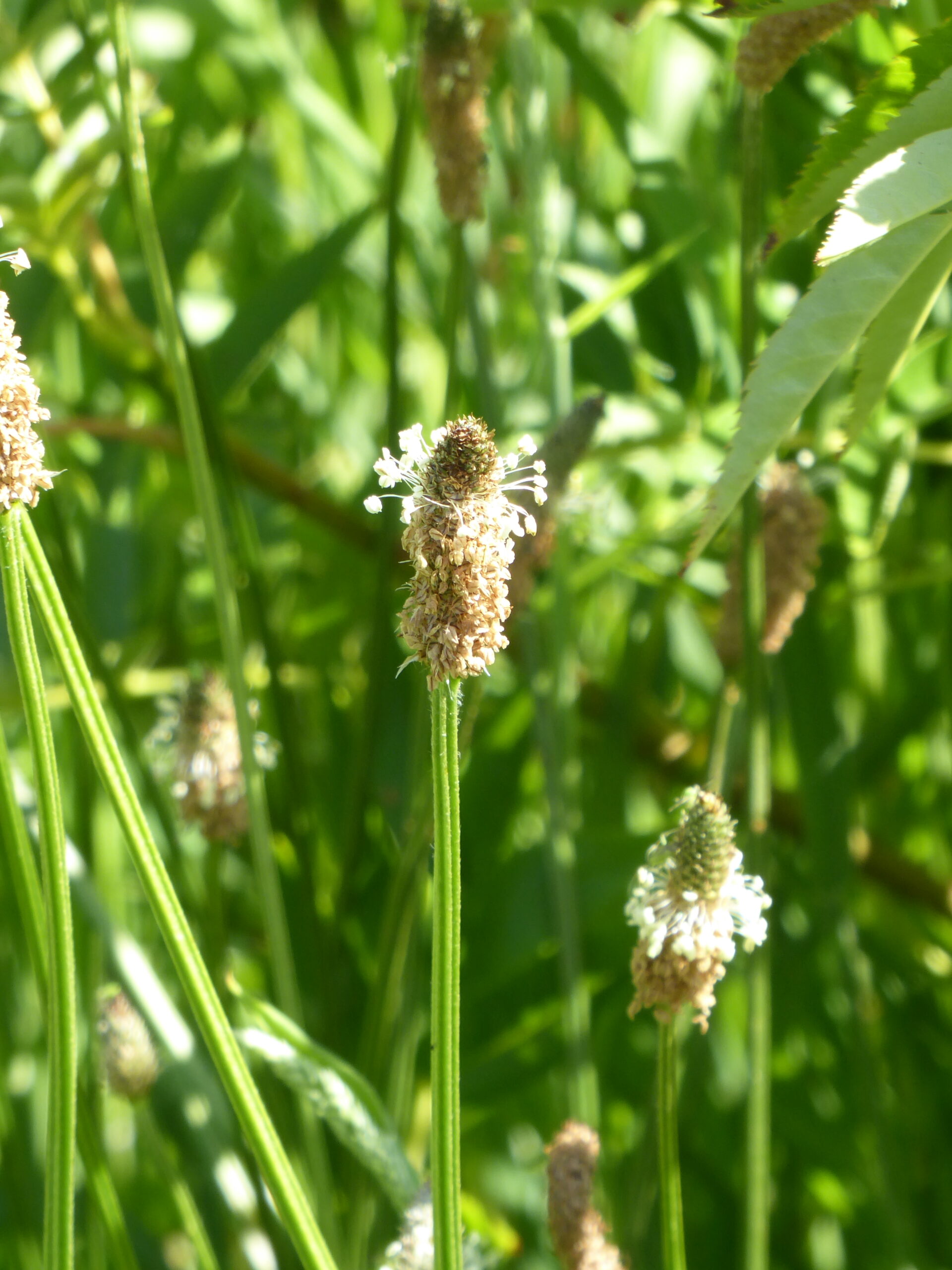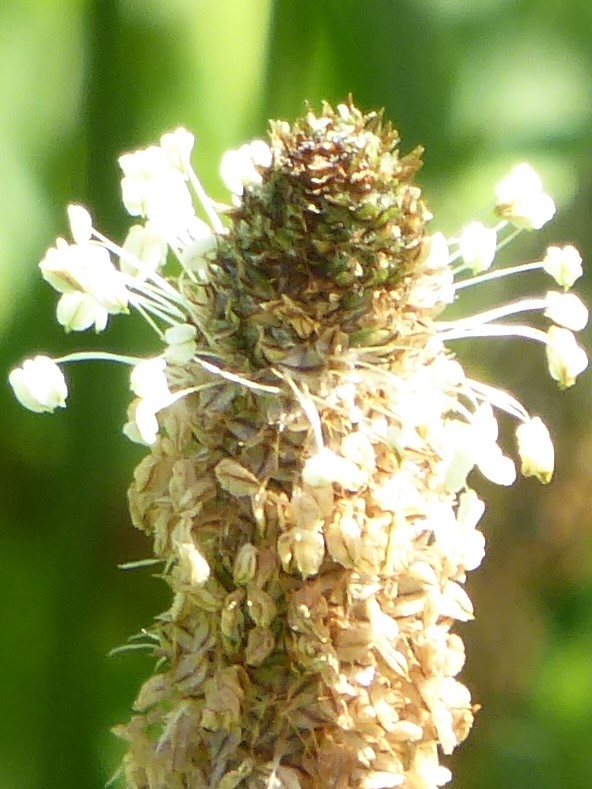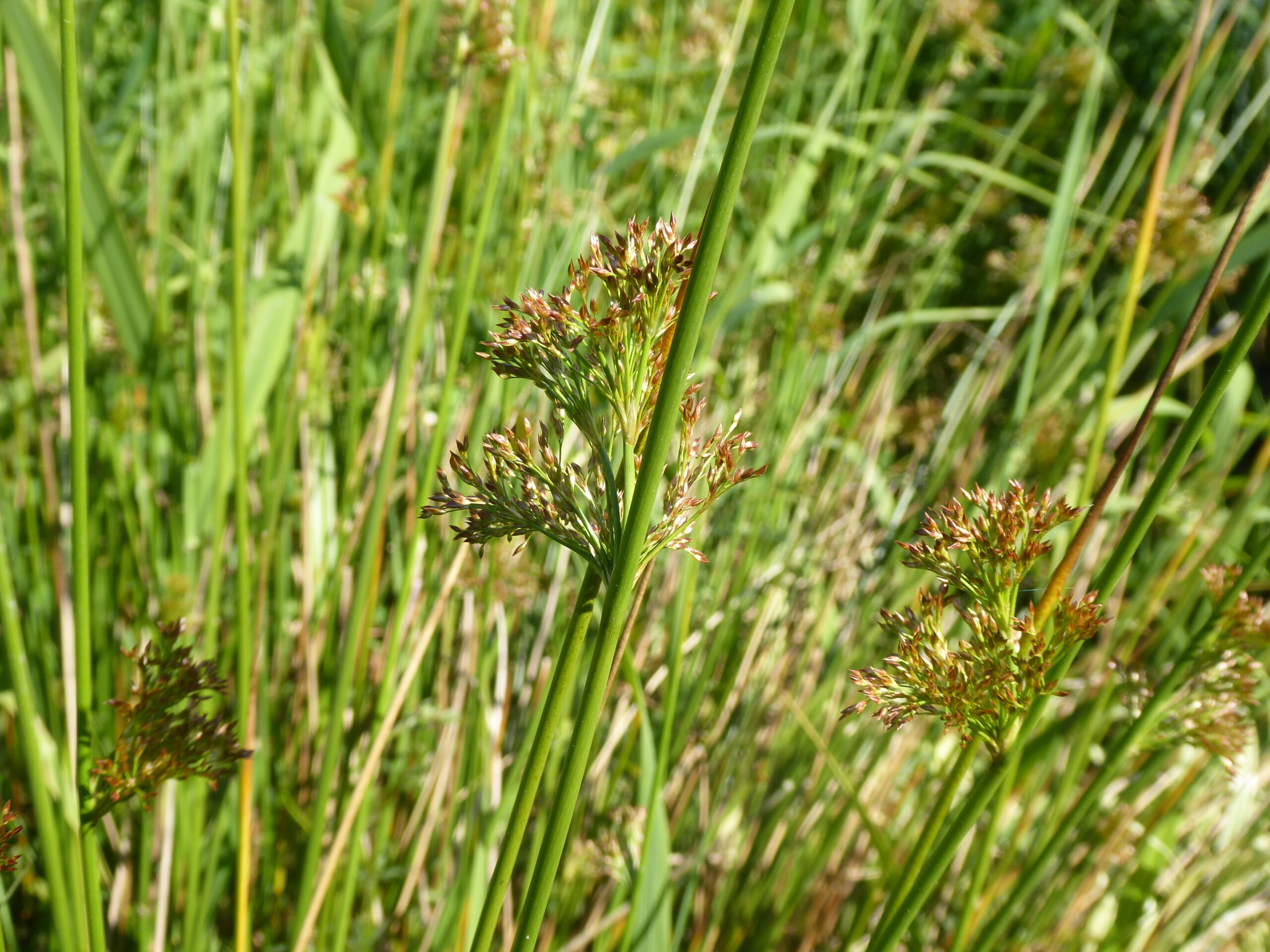On a mild summer’s evening we are walking round the garden and admiring this mass of purple flowers on the slope leading down into the watermeadow. On closer inspection the mass of purple comprises two distinct clumps of flowers – Mallow and Toadflax.
Common Mallow (Malva sylvestris)
This is quite tall. It can grow up to 1.2m. It flowers June-October and has pale mauve flowers with five petals arranged in a funnel-like formation and deep purple stripes running down each petal. The stalk is covered in fine hairs and the large leaves each have five lobes. The Common Mallow prefers a dry habitat i.e. roadside verges and sand dunes, hence growing on the ramp.
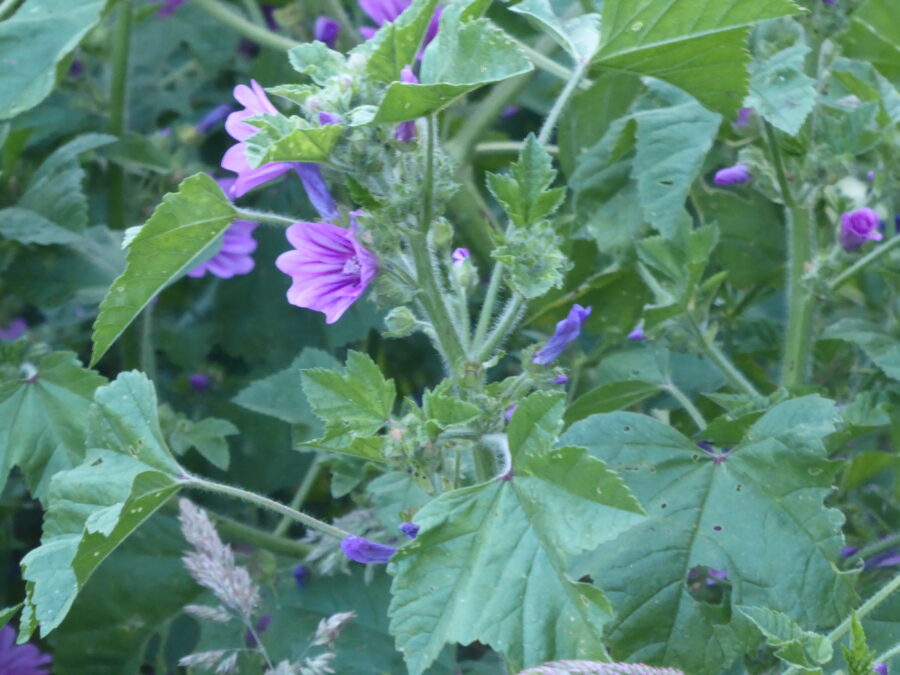

Purple Toadflax (Linaria purpurea)
Another tall plant growing up to 70cm with spikes of purple flowers at the top of the stem. The flowers have five purple petals. It is in the plantain family and prefers moist soil, stony ground, and walls. Although it is thought of as a weed, it is good for bees.
